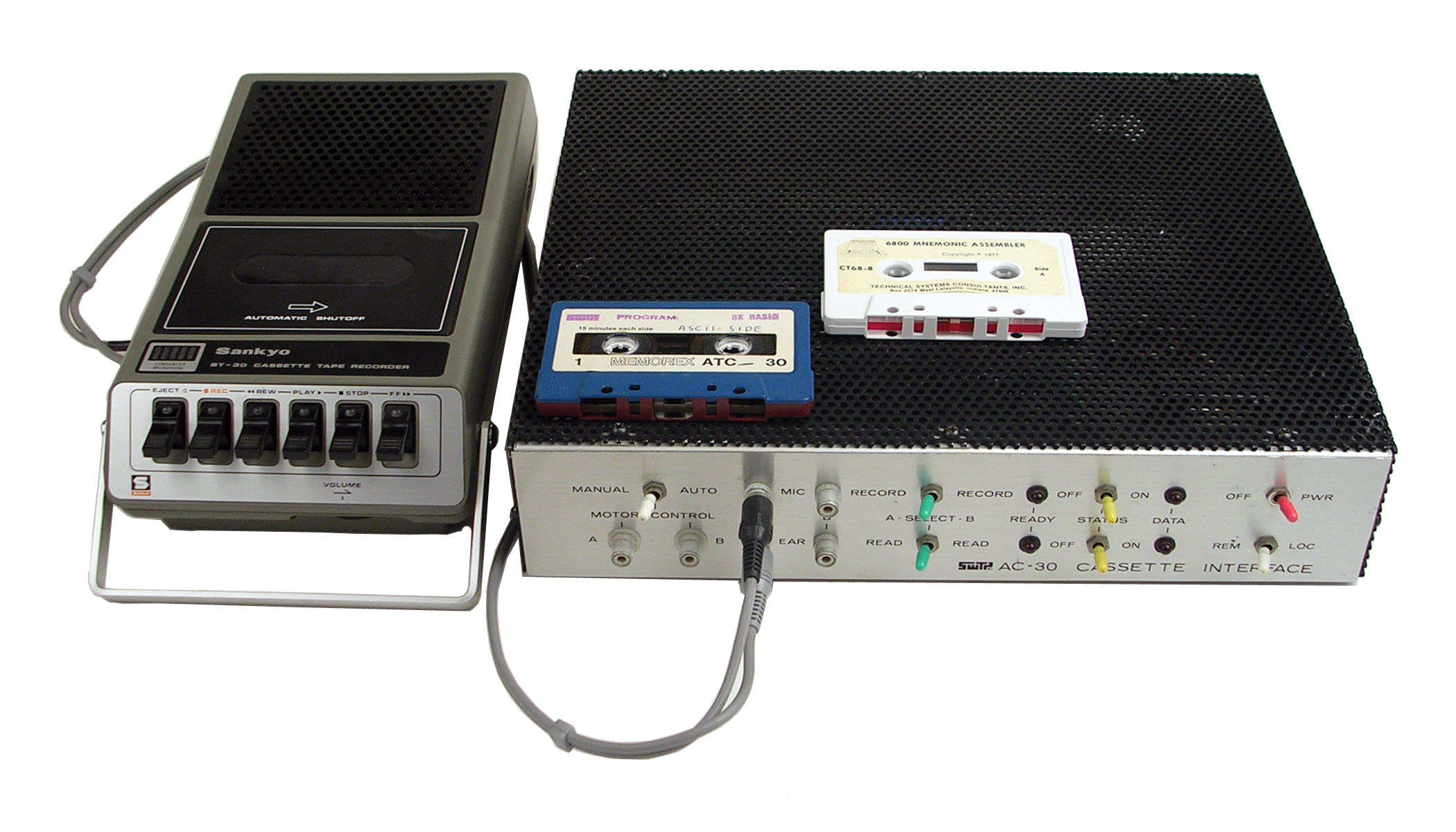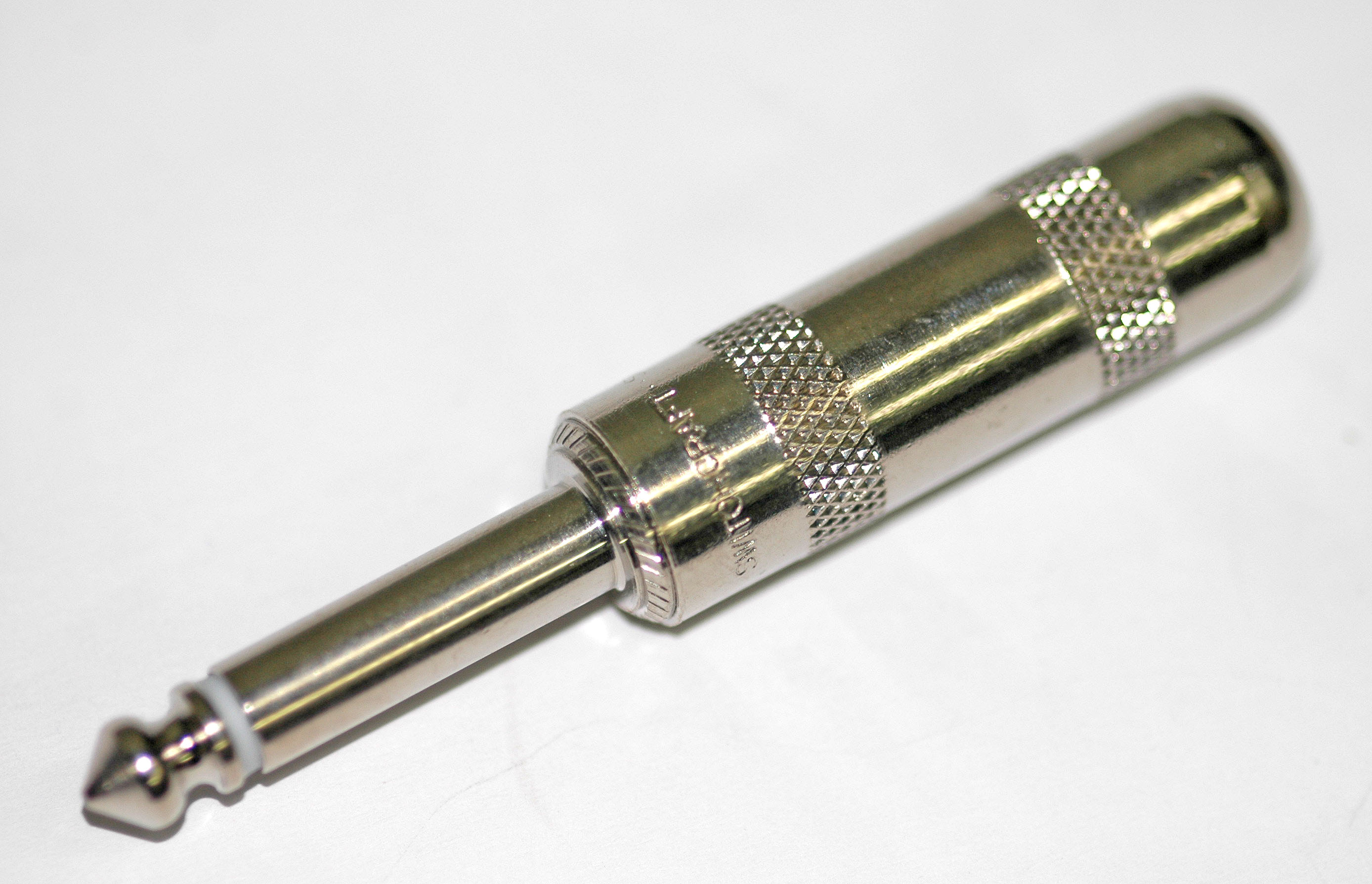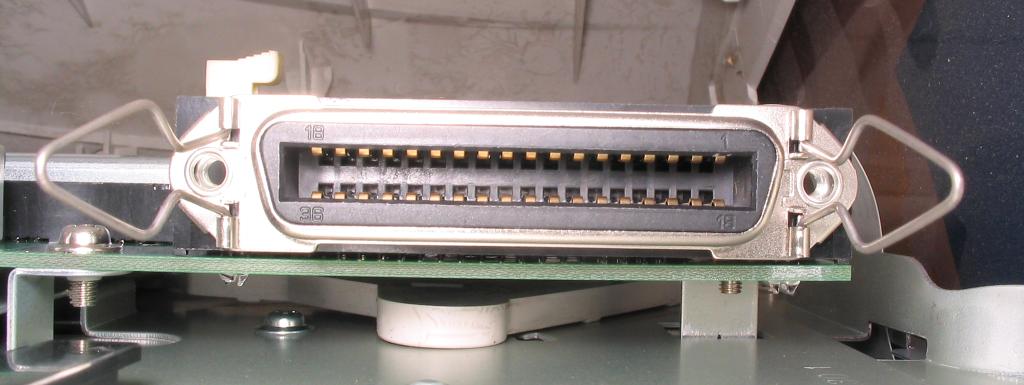|
Casio FX-603P
The FX-603P was a programmable calculator, manufactured by Casio from 1990. It was the successor model to the Casio FX-602P. Since it was only released in a limited number of countries in small quantities, it is now an excessively rare item which commands high prices when sold. Display The FX-603P featured a two line dot matrix display with 16 characters each as main display. An additional 4 digits 7-segment display used to display the program step when entering or debugging programs and 20 status indicators. Programming The programming model employed was key stroke programming by which each key pressed was recorded and later played back. On record multiple key presses were merged into a single programming step. There were only a very few operations which needed two bytes. The FX-603P could store 6,144 steps. Data could be stored in 110 memory register. The FX-603P series supported 20 labels for programs and subroutines called P0 .. P19 - twice the amount of the predecessor mode ... [...More Info...] [...Related Items...] OR: [Wikipedia] [Google] [Baidu] |
Programmable Calculator
Programmable calculators are calculators that can automatically carry out a sequence of operations under control of a stored computer programming, program. Most are Turing complete, and, as such, are theoretically general-purpose computers. However, their user interfaces and programming environments are specifically tailored to make performing small-scale numerical computations convenient, rather than general-purpose use. The first programmable calculators such as the IBM CPC used punched cards or other media for program storage. Hand-held electronic calculators store programs on magnetic strips, removable read-only memory cartridges, flash memory, or in battery-backed read/write memory. Since the early 1990s, most of these flexible handheld units belong to the class of graphing calculators. Before the mass-manufacture of inexpensive dot-matrix LCDs, however, programmable calculators usually featured a one-line numeric or alphanumeric display. The Big Four manufacturers of pro ... [...More Info...] [...Related Items...] OR: [Wikipedia] [Google] [Baidu] |
RS-232
In telecommunications, RS-232 or Recommended Standard 232 is a standard originally introduced in 1960 for serial communication transmission of data. It formally defines signals connecting between a ''DTE'' (''data terminal equipment'') such as a computer terminal, and a ''DCE'' (''data circuit-terminating equipment'' or ''data communication equipment''), such as a modem. The standard defines the electrical characteristics and timing of signals, the meaning of signals, and the physical size and pinout of connectors. The current version of the standard is ''TIA-232-F Interface Between Data Terminal Equipment and Data Circuit-Terminating Equipment Employing Serial Binary Data Interchange'', issued in 1997. The RS-232 standard had been commonly used in computer serial ports and is still widely used in industrial communication devices. A serial port complying with the RS-232 standard was once a standard feature of many types of computers. Personal computers used them for connection ... [...More Info...] [...Related Items...] OR: [Wikipedia] [Google] [Baidu] |
Kansas City Standard
The Kansas City standard (KCS), or ''Byte'' standard, is a data storage protocol for standard cassette tapes at . It originated in a symposium sponsored by Byte (magazine), ''Byte'' magazine in November 1975 in Kansas City, Missouri to develop a standard for the storage of digital microcomputer data on inexpensive consumer quality cassettes. The first systems based on the standard appeared in 1976. One variation on the basic standard is CUTS, which is identical at 300 bit/s, but with an optional 1200 bit/s mode. CUTS is the default encoding used by several later machine families, including those from Acorn Computers, Acorn and the MSX. MSX added a higher 2400 bit/s mode that is otherwise similar. The 1200 bit/s mode of CUTS was used as the standard for cross-platform BASICODE distribution. KCS originated from the earliest days of the microcomputer revolution, among other prolific protocols. Most home computers of the era have List of cassette tape data storag ... [...More Info...] [...Related Items...] OR: [Wikipedia] [Google] [Baidu] |
Pocket Computer
A pocket computer was a 1980s-era user programmable calculator-sized computer that had fewer screen lines, Some had only one line and often fewer characters per line, than the Pocket-sized computers introduced beginning in 1989. Manufacturers included Casio, Hewlett-Packard, Sharp, Tandy/Radio Shack (selling Casio and Sharp models under their own TRS line) and many more. The last Sharp pocket computer, the PC-G850V (2001) is programmable in C, BASIC, and Assembler. An important feature of pocket computers was that all programming languages were available for the device itself, not downloaded from a cross-compiler on a larger computer. The programming language was usually BASIC. See also * Formula calculator * Mobile device * Programmable calculator * Smartbook A smartbook was a class of mobile device that combined certain features of both a smartphone and netbook computer, produced between 2009 and 2010. Smartbooks were advertised with features such as always on, all-day ba ... [...More Info...] [...Related Items...] OR: [Wikipedia] [Google] [Baidu] |
Casio FX-850P
The Casio FX-850P is a scientific calculator introduced in 1987 and sold until 1999. Specifications * 2 lines with 32 5×7 characters LCD ** (some indicators and a 5 digit 7-segment display) * 8 KB RAM (FX-860P: 24 KB, FX-880P: 32 KB) * CPU: VLSI at 1.228 MHz. Hitachi HD62002A01 (FX-860P, FX880P: HD62002A03) * Integrated speaker * Internal slot for memory expansion (32 KB) * Connector with support for RS232 and Centronics (only level converter for RS232, Centronics needed) * LCD Driver: 2 x HD66100F * 2x 3V CR2032 lithium batteries as main power supply * 1x 3V CR1220 lithium battery as memory backup (RAM power supply) User's manual at http://www.usersmanualguide.com/casio/calculators/fx-850p The calculator had a BASIC interpreter, MEMO function, a formula library. The built-in 8 kB memory could be expanded using the optional Casio RP-8 (8 kB) or RP-33 (32 kB) RAM expansion modules. An optional Casio FA-6 interface board provided a cassette tape recorder connector, a Centr ... [...More Info...] [...Related Items...] OR: [Wikipedia] [Google] [Baidu] |
RS-232C
In telecommunications, RS-232 or Recommended Standard 232 is a standard originally introduced in 1960 for serial communication transmission of data. It formally defines signals connecting between a ''DTE'' (''data terminal equipment'') such as a computer terminal, and a ''DCE'' (''data circuit-terminating equipment'' or ''data communication equipment''), such as a modem. The standard defines the electrical characteristics and timing of signals, the meaning of signals, and the physical size and pinout of connectors. The current version of the standard is ''TIA-232-F Interface Between Data Terminal Equipment and Data Circuit-Terminating Equipment Employing Serial Binary Data Interchange'', issued in 1997. The RS-232 standard had been commonly used in computer serial ports and is still widely used in industrial communication devices. A serial port complying with the RS-232 standard was once a standard feature of many types of computers. Personal computers used them for connection ... [...More Info...] [...Related Items...] OR: [Wikipedia] [Google] [Baidu] |
Personal Computer
A personal computer (PC) is a multi-purpose microcomputer whose size, capabilities, and price make it feasible for individual use. Personal computers are intended to be operated directly by an end user, rather than by a computer expert or technician. Unlike large, costly minicomputers and mainframes, time-sharing by many people at the same time is not used with personal computers. Primarily in the late 1970s and 1980s, the term home computer was also used. Institutional or corporate computer owners in the 1960s had to write their own programs to do any useful work with the machines. While personal computer users may develop their own applications, usually these systems run commercial software, free-of-charge software ("freeware"), which is most often proprietary, or free and open-source software, which is provided in "ready-to-run", or binary, form. Software for personal computers is typically developed and distributed independently from the hardware or operating system ma ... [...More Info...] [...Related Items...] OR: [Wikipedia] [Google] [Baidu] |
TRS Connector
A phone connector, also known as phone jack, audio jack, headphone jack or jack plug, is a family of electrical connectors typically used for analog audio signals. A plug, the male connector, is inserted into the jack, the female connector. The phone connector was invented for use in telephone switchboards in the 19th century and is still widely used. The phone connector is cylindrical in shape, with a grooved tip to retain it. In its original audio configuration, it typically has two, three, four or, occasionally, five contacts. Three-contact versions are known as ''TRS connectors'', where ''T'' stands for "tip", ''R'' stands for "ring" and ''S'' stands for "sleeve". Ring contacts are typically the same diameter as the sleeve, the long shank. Similarly, two-, four- and five-contact versions are called ''TS'', ''TRRS'' and ''TRRRS connectors'' respectively. The outside diameter of the "sleeve" conductor is . The "mini" connector has a diameter of and the "sub-mini" co ... [...More Info...] [...Related Items...] OR: [Wikipedia] [Google] [Baidu] |
Casio FX-602P
The FX-601P and FX-602P were programmable calculators, manufactured by Casio from 1981. It was the successor model to the Casio FX-502P series and was itself succeeded in 1990 by the Casio FX-603P. Display The FX-601P series featured a single line dot matrix display with 11 characters as main display. An additional 3 digits 7-segment display used to display exponents as well as program steps when entering or debugging programs. There were 11 status indicators. Programming The programming model employed ''key stroke'' programming by which each key pressed was recorded and later played back. On record, multiple key presses were merged into a single programming step. Only a few operations needed two bytes. Synthetic programming was possible but not very common The FX-601P could store 128 fully merged steps and data could be stored in 11 memory register. The memory of the FX-602P could be partitioned between from 32 to 512 fully merged steps and data could be stored in 22 to 88 me ... [...More Info...] [...Related Items...] OR: [Wikipedia] [Google] [Baidu] |
Programmable Calculator
Programmable calculators are calculators that can automatically carry out a sequence of operations under control of a stored computer programming, program. Most are Turing complete, and, as such, are theoretically general-purpose computers. However, their user interfaces and programming environments are specifically tailored to make performing small-scale numerical computations convenient, rather than general-purpose use. The first programmable calculators such as the IBM CPC used punched cards or other media for program storage. Hand-held electronic calculators store programs on magnetic strips, removable read-only memory cartridges, flash memory, or in battery-backed read/write memory. Since the early 1990s, most of these flexible handheld units belong to the class of graphing calculators. Before the mass-manufacture of inexpensive dot-matrix LCDs, however, programmable calculators usually featured a one-line numeric or alphanumeric display. The Big Four manufacturers of pro ... [...More Info...] [...Related Items...] OR: [Wikipedia] [Google] [Baidu] |
Centronics Printer Port
IEEE 1284 is a standard that defines bi-directional parallel communications between computers and other devices. It was originally developed in the 1970s by Centronics, and was widely known as the Centronics port, both before and after its IEEE standardization. History In the 1970s, Centronics developed the now-familiar printer parallel port that soon became a ''de facto'' standard. Centronics had introduced the first successful low-cost seven-wire print head, which used a series of solenoids to pull the individual metal pins to strike a ribbon and the paper. A dot matrix print head consists of a series of metal pins arranged in a vertical row. Each pin is attached to some sort of actuator, a solenoid in the case of Centronics, which can pull the pin forward to strike a ribbon and the paper. The entire print head is moved horizontally in order to print a line of text, striking the paper several times to produce a matrix for each character. Character sets on early prin ... [...More Info...] [...Related Items...] OR: [Wikipedia] [Google] [Baidu] |
Scientific Calculator
A scientific calculator is an electronic calculator, either desktop or handheld, designed to perform mathematical operations. They have completely replaced slide rules and are used in both educational and professional settings. In some areas of study scientific calculators have been replaced by graphing calculators and financial calculators which have the capabilities of a scientific calculator along with the capability to graph input data. Functions When scientific calculators were originally marketed they normally had only four of five capabilities (addition, subtraction, multiplication, division and square root). Modern scientific calculators generally have many more capabilities than the original four or five function calculator, and the capabilities differ between manufacturers and models. The capabilities of a modern scientific calculator include: * scientific notation * floating-point decimal arithmetic * logarithmic functions, using both base 10 and base e * t ... [...More Info...] [...Related Items...] OR: [Wikipedia] [Google] [Baidu] |





